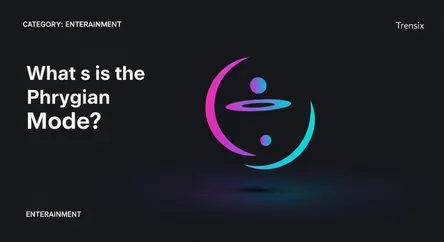Entertainment
What is the Phrygian Mode?

Discover the Phrygian mode, a musical scale known for its dark, Spanish flavor. Learn why it's popular in metal, flamenco, and film scores.
What Is It?
The Phrygian mode is one of the seven modern musical modes, a minor scale characterized by its lowered (or flatted) second scale degree. Built on the third degree of a major scale, its formula is 1, b2, b3, 4, 5, b6, b7. This unique b2 interval gives Phrygian a distinctively dark, tense, and exotic sound, often associated with Spanish flamenco music and Middle Eastern melodies. For example, playing the notes of C major but starting and ending on E (E-F-G-A-B-C-D) creates the E Phrygian mode, which has a completely different harmonic feel.
Why Is It Trending?
The Phrygian mode's popularity is surging thanks to its potent sound in specific genres. It's a staple in heavy metal, where guitarists use its inherent darkness to create powerful, aggressive riffs. Its flamenco association also makes it a go-to for musicians exploring world music and for film composers seeking to build suspense or an exotic atmosphere. The rise of online music theory tutorials has also made once-obscure concepts like modes more accessible to a new generation of self-taught musicians looking for unique sounds.
How Does It Affect People?
The sound of the Phrygian mode has a strong emotional effect. The clash between the root note and the flatted second creates an immediate sense of tension and drama that can feel unsettling or suspenseful. This makes it a highly effective tool for composers wanting to evoke a specific mood, from the high-energy passion of a flamenco performance to the ominous dread in a horror movie soundtrack. For listeners and players, it offers a break from conventional harmony, providing an impactful and memorable sonic experience.